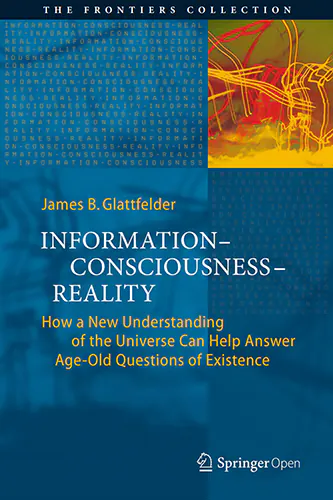The Library of Consciousness
of Consciousness
Fun To Imagine (1983)

Information — Consciousness — Reality
This open access book chronicles the rise of a new scientific paradigm offering novel insights into the age-old enigmas of existence. Over 300 years ago, the human mind discovered the machine code of reality: mathematics. By utilizing abstract thought systems, humans began to decode the workings of the cosmos. From this understanding, the current scientific paradigm emerged, ultimately discovering the gift of technology. Today, however, our island of knowledge is surrounded by ever longer shores of ignorance. Science appears to have hit a dead end when confronted with the nature of reality and consciousness. In this fascinating and accessible volume, James Glattfelder explores a radical paradigm shift uncovering the ontology of reality. It is found to be information-theoretic and participatory, yielding a computational and programmable universe.
Mind Outside Brain
We approach the problem of the extended mind from a radically non-dualist perspective. The separation between mind and matter is an artefact of the outdated mechanistic worldview, which leaves no room for mental phenomena such as agency, intentionality, or feeling. We propose to replace it by an action ontology, which conceives mind and matter as aspects of the same network of processes. By adopting the intentional stance, we interpret the catalysts of elementary reactions as agents exhibiting desires, intentions, and sensations. Autopoietic networks of reactions constitute more complex super-agents, which moreover exhibit memory, deliberation and sense-making. In the specific case of social networks, individual agents coordinate their actions via the propagation of challenges. The distributed cognition that emerges from this interaction cannot be situated in any individual brain. This non-dualist, holistic view extends and operationalises process metaphysics and Eastern philosophies. It is supported by both mindfulness experiences and mathematical models of action, self-organisation, and cognition.
Religion for the Nonreligious
The Omega Point as Eschaton
Frank Tipler presents an outline of the Omega Point theory, which is a model for an omnipresent, omniscient, omnipotent, evolving, personal God who is both transcendent to spacetime and immanent in it, and who exists necessarily. The model is a falsifiable physical theory, deriving its key concepts not from any religious tradition but from modern physical cosmology and computer science; from scientific materialism rather than revelation. Four testable predictions of the model are given. The theory assumes that thinking is a purely physical process of the brain, and that personality dies with the brain. Nevertheless, he shows that the Omega Point theory suggests a future universal resurrection of the dead very similar to the one predicted in the Judeo-Christian-Islamic tradition. The notions of “grace” and the “beatific vision” appear naturally in the model.